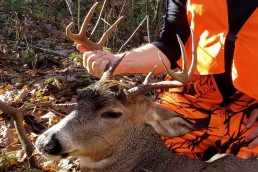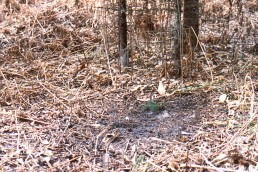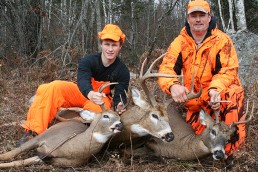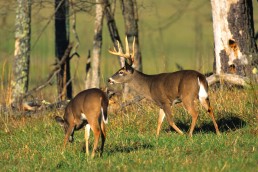Best Buck Stand Site while Breeding is in Progress
SHARE THIS POST
At 8:45 opening morning, three days after November 3, when whitetails begin breeding in northern Minnesota, my son Ken shot a 3 1/2-year-old 8-pointer at his Acorn Mountain stand site. The next evening, because we were expecting the current hunting season to be especially tough with deer numbers being at an all-time low in our region, my son Dave took a yearling buck in another feeding area 1 mile north of there. And, a little after 9 a.m. just a few mornings later, my son John dropped a 2 1/2-year-old 5-point buck in a feeding area after a two-mile hike around Moose Mountain (we name all our big hills). Then at 9:30 on the final morning of our hunt, Dave took another buck, this time a 3 1/2-year-old at a browse area on the east side of Acorn Mountain, filling our usual self-imposed limit of four bucks per hunting season.
Like last November, since 1990, almost all of our stand sites have been located adjacent to whitetail feeding areas—graze (greens) or acorn areas before the end of the first week in November, after which our whitetails normally switch to eating woody browse. Only four stand sites I have personally used (half-day each) since 2006 were located near freshly renewed ground scrapes (three big bucks taken) and only two were located at watering sites (two big bucks taken, one by Ken and one by me).
The reasons why we key on feeding areas in November are simple:
- The two-week primary breeding phase of the whitetail rut is in progress during our Minnesota firearm deer hunting season.
- Does in heat feed during usual (predictable) feeding hours.
- Feeding does are more visible than anywhere else (feeding areas fairly open where sunlight can reach the ground and stimulate the growth of foods whitetails prefer in fall, early winter).
- Does in heat are accompanied by the largest of bucks, otherwise the most elusive of whitetails.
- Although not with 100-percent certainty, at no other time are older bucks as predictable—time-wise and location-wise—or as visible or as vulnerable as they are at this time to skilled stand-hunters.
So, where do most Minnesota firearm hunters determined to take mature bucks stand-hunt while breeding is in progress?
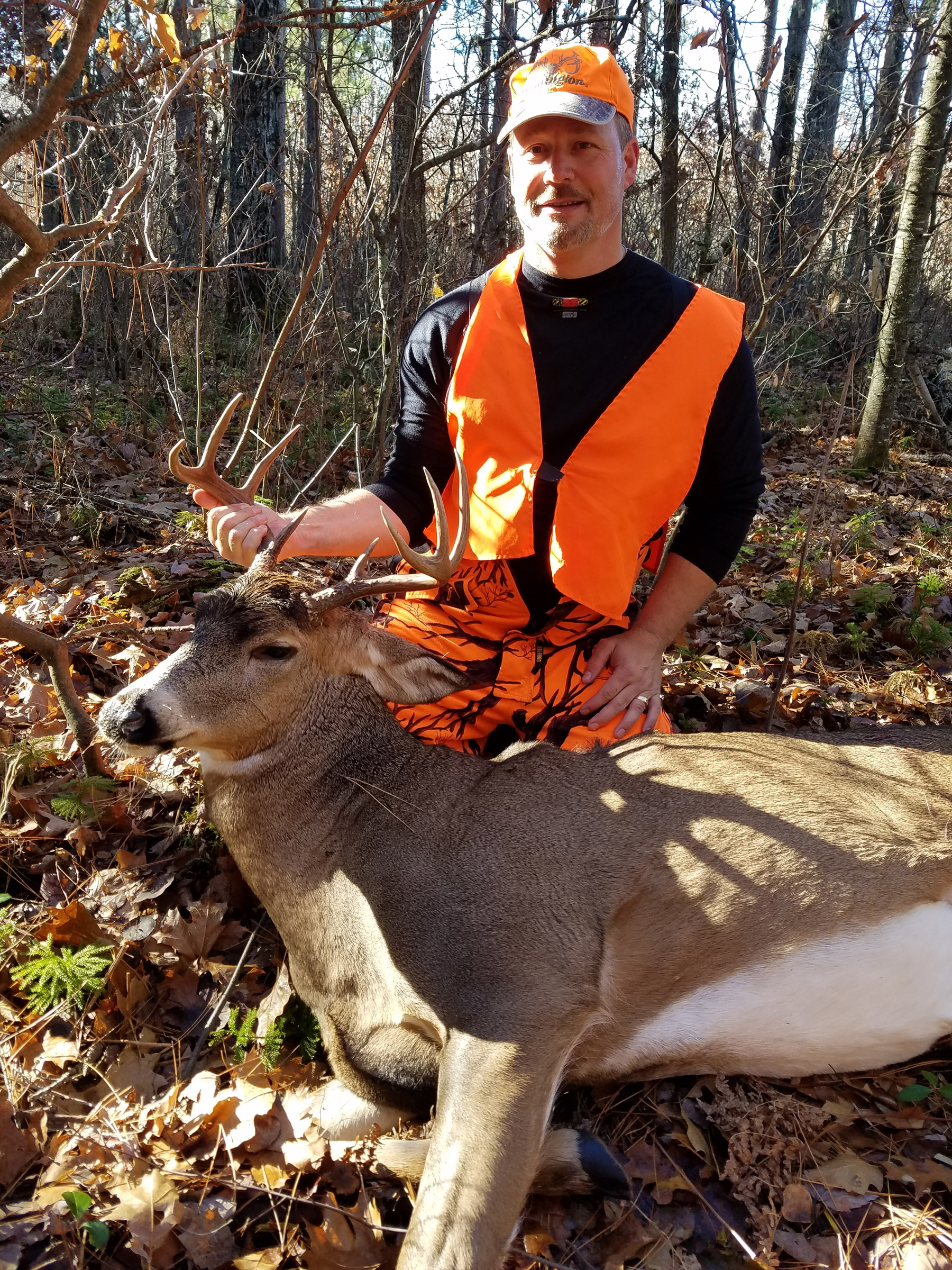
At scrape trails, using buck lures, single treestands and other hunting aids that promise much-improved odds for taking bucks with enormous antlers.
There are quite a few reasons why scrape trails are not particularly productive for hunting mature bucks while breeding is in progress. For one, once the primary breeding phase of the rut begins in November, dominant breeding bucks (one per square mile or one per two square-miles) no longer have much time to visit and renew scrapes. They spend almost all of their time searching for does in heat, accompanying and breeding does in heat while keeping lesser antlered bucks away from their does in heat. This is all despite having to run them off before breeding began.
Are you enjoying this post?
You can be among the first to get the latest info on where to go, what to use and how to use it!
As you Minnesota hunters have probably noticed, few if any ground scrapes are renewed after the first few days of November. Many not renewed at this time are those of bucks lower in their pecking orders, 1/2 to 6 1/2 years of age (some big), that are temporarily avoiding rampaging dominant breeding bucks by keeping low profiles in secluded hideaways off-range until breeding ends.
Aside from the fact that most antlered bucks are temporarily missing from their usual home ranges, few are attracted by doe-in-heat lure scents during this period because dominant breeding bucks currently accompanying does in heat or any buck shadowing a breeding pair will not abandon that doe for about a day and a half (each doe being in heat only 24–26 hours) unless a human (or wolf) is unexpectedly discovered very near. Also, these bucks will ignore all other airborne sources of doe in estrus pheromone whether originating from another doe in heat, doe urine or from a bottle bought in a store. Under such circumstances, other does in heat are obliged to find the dominant breeding buck.
Because almost every deer hunter who hopes to take a buck these days uses a doe-in-heat buck lure, there is hardly a buck 2 1/2 years of age or older today that does not realize it’s dangerous to approach a source of airborne pheromone accompanied by fresh airborne human odors—impossible to eliminate 100 percent or for long whether stand-hunting at ground level or in a tree. Most hunters fail to use such a lure in a way that keeps their odors from spreading downwind (vertically as well as horizontally) into the downwind stream of airborne pheromone. Many hunters make matters worse by depositing fresh human trail scents, including the strong odor emitted by their rubber boot soles that can persist for four or more days about buck- or human-made ground scrapes laced with store-bought pheromone. Too often, calls and rattling antlers used improperly or for too long also inform mature bucks where stand-hunters are waiting in ambush.
Hunting feeding areas currently favored by does and other deer can be equally disappointing if done improperly, which is very easy to do. Since 1990, my hunting-related studies have repeatedly revealed it is nearly impossible for even the most skilled of stand-hunters. This includes my sons and I who have been very successful at taking mature bucks from elevated and ground-level stand sites for over three decades to avoid being identified by mature bucks or does at feeding areas for times longer than three consecutive half-days of stand hunting.
The hunting value of most stand sites begins to deteriorate very rapidly during the first half-day one is used, beginning minutes before a hunter first arrives during a season. It’s the reason my hunting partners and I rarely use a stand site longer than one morning or afternoon.
MWO
SHARE THIS POST
Did you enjoy this post?
You can be among the first to get the latest info on where to go, what to use and how to use it!
Dr. Ken Nordberg
Based on his 55 years of field research, Dr. Ken Nordberg has written more than 800 magazine articles, 12 books on whitetails—including the famous Whitetail Hunter’s Almanac series—five books on black bear hunting and produced Buck and Bear Hunting School videos. You may peruse his encyclopedic website with whitetail hunting tips: drnordbergondeerhunting.com, his blog: drnordbergondeerhunting.wordpress.com, or social media pages.
